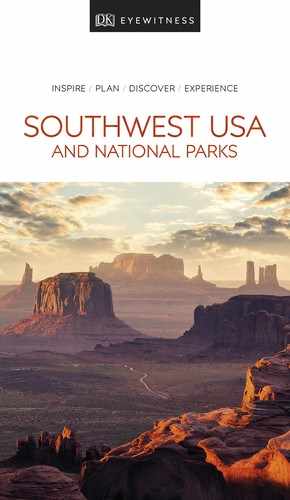Experience More

t Landscape of striped red-rock boulders in the Hopi Indian Reservation
The Hopi, Arizona’s only Pueblo Indians, are the direct descendants of the Ancestral Puebloan people, whom they call the Hisatsinom. The Hopi Reservation is surrounded by the lands of the Navajo. The landscape is harsh and barren, yet the Hopi have cultivated the land here for a thousand years. They worship, through the kachina, the living spirits of plants and animals, believed to arrive each year to stay with the tribe during the growing season (December to July). Most of the Hopi villages are on or near one of three mesas (flat-topped elevations), named First, Second, and Third Mesa. A guided tour is the best way to experience the mesas. Tours and how to book are listed on the Experience Hopi website (www.experiencehopi.com).
The most visited site is Walpi, the ancient pueblo on First Mesa, which was first inhabited in the 12th century. To reach Walpi, visitors drive up to the mesa from the Pollaca settlement to the village of Sichomovi. Nearby, the Ponsi Visitor Center is the departure point for the one-hour Walpi tours. Walpi was constructed to be easily defended, and straddles a dramatic knife edge of rock extending from the tip of First Mesa. In places Walpi is less than 100 ft (33 m) wide, with a drop of several hundred feet on both sides. The Walpi tour includes several stops where visitors can purchase kachina figurines and distinctive handcrafted pottery, or sample the Hopi piki bread. Those wishing to shop further can continue on to Second Mesa, where several galleries and stores offer an array of Hopi arts and crafts. The Hopi Cultural Center on Second Mesa is home to a restaurant, the only hotel for miles around, and a museum that has a collection of photographs depicting scenes of Hopi life.
On narrow, rocky Third Mesa, Old Oraibi pueblo, thought to have been founded in the 12th century, is claimed to be the oldest continuously occupied human settlement in North America.
Did You Know?
The Hopi believe in Animism – that all animals, trees, rocks, and plants have a spirit and a soul.
Artisans of the Hopi Indian Reservation
The artisans on each Hopi mesa specialize in a particular craft. On First Mesa, this is carved figures (representing the kachina spirits) and painted pottery; on Second Mesa, it is silver jewelry and coiled baskets; and on Third Mesa, wicker baskets and woven rugs. You can purchase crafts directly from the artists, or from shops on the reservation.
Although named after its location on the Navajo Reservation, this monument is actually known for its Ancestral Puebloan ruins. The most accessible ruin here is the beautifully preserved, 135- room pueblo of Betatakin, which fills a vast, curved niche in the cliffs of Tsegi Canyon. An easy one-mile (1.6-km) trail from the visitor center leads to an overlook where Betatakin is clearly visible on the far side, near the canyon floor.
A much more demanding 17-mile (27-km) round-trip hike leads to Keet Seel, a larger and more successful community than Betatakin. Construction began in about 1250, but the site is thought to have been abandoned by 1300. Only a limited number of permits to visit the ruin are issued each day and the hike requires overnight camping at a basic camp site.

t Handwoven Navajo rugs for sale at Hubbell Trading Post National Historic Site
At the heart of the Navajo reservation in the small town of Ganado, the Hubbell Trading Post was established in the 1870s by trader John Lorenzo Hubbell and is the oldest continuously operating trading post in the Navajo Nation. The Navajo traded wool, blankets, turquoise, and other items in exchange for tools, household goods, and food. The trading posts were also a resource during times of need. When a smallpox epidemic struck in 1886, Hubbell used his house as a hospital.
Today, the post still hums with trading activities. One room is a working general store, its rafters hung with frying pans and hardware, and its shelves stacked with cloth, medicines, and food. Another room is filled with Navajo baskets, Hopi kachina dolls, and handwoven rugs, while another has a long row of glass cases with impressive silver and turquoise jewelry.
Visitors can tour Hubbell’s restored home and view the significant collection of Southwestern art. At the visitor center, Navajo women demonstrate rug-weaving.
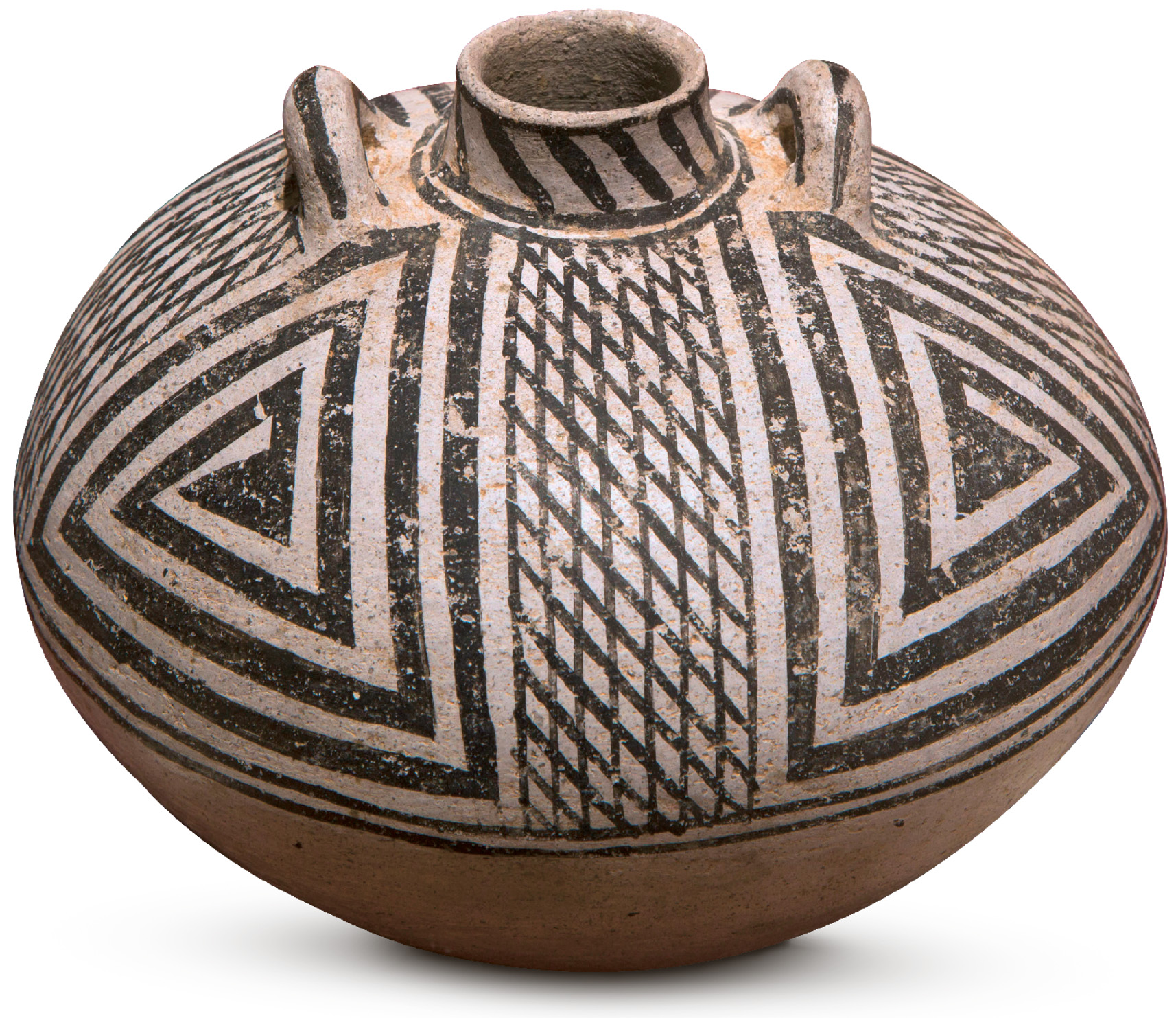
t Pottery at the Anasazi Heritage Center, in the Canyons of the Ancients
This vast site protects the nation’s greatest density of indigenous archaeological remains, encompassing 10,000 years of Northern Ancestral Puebloan culture. More than 6,000 ancient sites, including cliff dwellings, kivas (religious chambers), petro-glyphs, and shrines, have been recorded here. Among the highlights are the Great Kiva at Lowry Pueblo and the Painted Hand Pueblo. It can be hard to find the sites without a map, so first stop by the Anasazi Heritage Center, which doubles as the monument’s visitor center. The museum here has displays and interactive exhibits on the ancient Pueblo cultures of the region. Hiking trails of varying degrees of difficulty cross this rugged landscape. Bring plenty of water and food as none is available within the park.
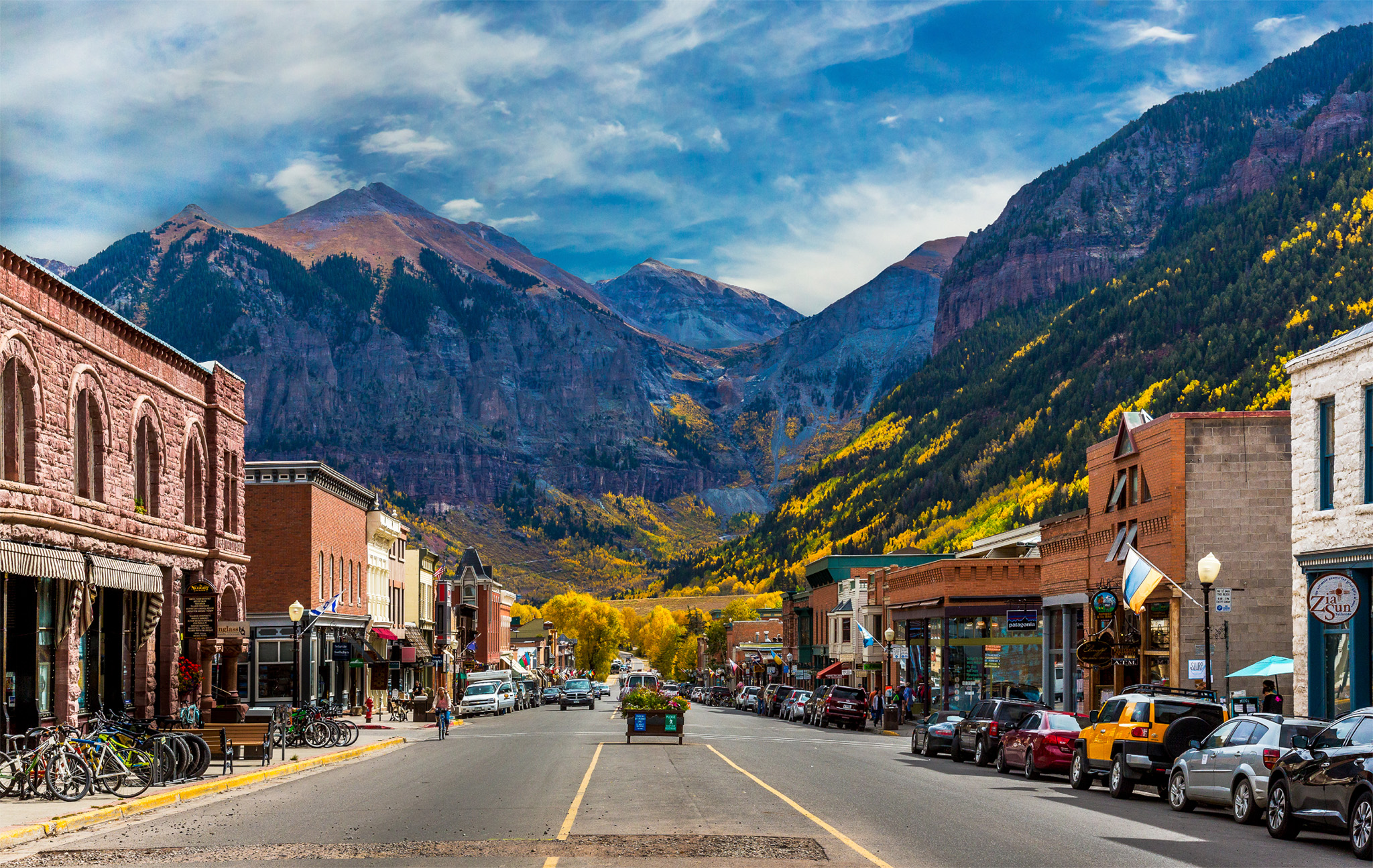
t Main Street in Telluride, with a mountain backdrop;
Once a mining town, Telluride is now a popular ski resort with upscale boutiques and restaurants. The exclusive Mountain Village lies across a mountain ridge reached by a free 12-minute gondola ride.
In summer there are walks and riding trails, and fishing in the lakes and rivers. The town also hosts an annual international film festival.

t A skier tackling the local slopes
This dusty ranch town, a good base for exploring the nearby monuments, is home to the rather unusual Bolack Museum of Fish and Wildlife, which houses the world’s largest collection of mounted game animals. The Farmington Museum focuses on local history and geology and features a children’s gallery with interactive exhibits.
About 25 miles (40 km) west of Farmington is Shiprock, named for the 1,500-ft (457-m) rock peak that thrusts up from the valley floor. To the Navajo, this rock is sacred. Note that visitors can only observe the peak from the roadsides of Highways 64 or 33.
Eight miles (12 km) south are the Salmon Ruins, once an outlying Chaco settlement. These ruins were protected from gravediggers by the Salmon family, who homesteaded here in the 1870s. As a result, a century later archaeologists recovered many artifacts, which are on display in the excellent on-site museum. Outside the museum trails lead to the ruins, which show the superb level of skill of the ancient stonemasons.
" '
Bolack Museum of Fish and Wildlife
⌂ 3901 Bloomfield Hwy # 9am–3pm Mon–Sat ¢ Public hols ∑ bolackmuseums.com
'
Farmington Museum
⌂ 3041 E Main St # 8am–5pm Mon–Sat ∑ farmingtonmuseum.org
" '
Salmon Ruins
⌂ 6131 Hwy 64 # 8am–5pm Mon–Fri, 9am–5pm Sat & Sun (Nov–Apr: noon–5pm Sun) ¢ Jan 1, Easter, Jul 4, Thanksgiving, Dec 25 ∑ salmonruins.com
300
The number of people estimated to have inhabited Salmon Ruins.
The small town of Aztec was named for its ruins, which are Ancestral Puebloan, and not Aztec as early settlers believed. Preserved as the Aztec Ruins National Monument, the site’s 500-room pueblo flourished in the late 1200s. Visitors can look inside a rebuilt kiva (religious chamber).
" '
Aztec Ruins National Monument
⌂ North of Hwy 516 on Ruins Rd # 8am–6pm daily (9am–4pm in winter) ¢ Jan 1, Thanksgiving, Dec 25 ∑ nps.gov/azru
The wonderfully preserved old mining town of Ouray, 23 miles (37 km) north of Silverton on Highway 550, is a popular base for hikers and 4WD enthusiasts. To the south of town, a loop road leads to Box Canyon Falls Park.
EXPERIENCE The Four Corners
|
Eat Chop House Restaurant This eatery uses only organic fowl, non-threatened fish species, and local ingredients. ⌂ 233 W Colorado Ave, Telluride ∑ newsheridan.com \ 221 South Oak Candlelight and white linen create an elegant ambience at this fine restaurant with an eclectic menu. ⌂ 221 South Oak St, Telluride ¢ Lunch ∑ 221southoak.com \ |
This well-preserved mining town is a registered National Historic Landmark. The facades along Blair Street have altered little since the days of the 1880s silver-mining boom that gave the town its name. On Greene Street is the 1902 County Jail, which houses the San Juan County Historical Museum. Greene Street East leads 13 miles (21 km) north to the ghost town of Animas Forks, which was abandoned after the mines ran out of silver.
"
San Juan County Historical Museum
⌂ 1557 Greene St # Late May–mid-Oct: 10am–5pm daily (Oct 1–mid-Oct: to 3pm) ∑ sanjuancountyhistoricalsociety.org
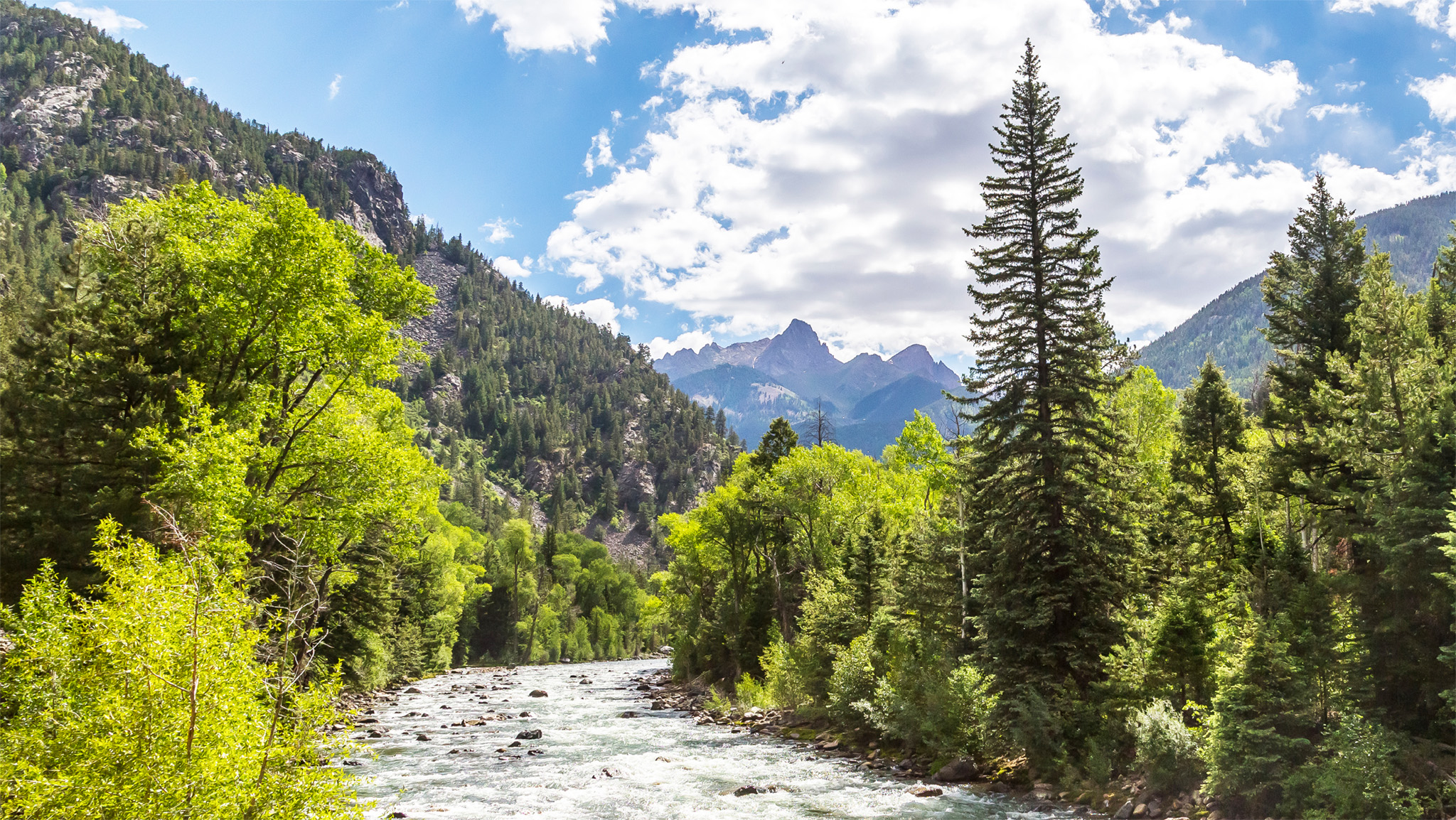
t The Animas River just north of Durango, winding through a beautiful fall landscape
Durango is a lovely town with shady tree-lined streets and splendid Victorian architecture. Its attractive setting, on the banks of the Animas River, draws increasing numbers of residents, making the town the largest community in this part of Colorado. It is famous as the starting point of the Durango and Silverton Narrow Gauge Railroad, perhaps the most scenic train ride in the US. A 1920s coal-fired steam train ferries more than 200,000 visitors each year on a leisurely journey along the Animas River valley, up steep gradients through canyons and mountain scenery, to Silverton. Passengers may choose to ride in either Victorian or open-sided “gondola” cars that offer great views. Several stops along the way allow hikers and anglers access to the pristine backcountry of the beautiful, vast San Juan National Forest.
"
Durango and Silverton Narrow Gauge Railroad
⌂ 479 Main Ave # Times vary, check website ∑ durangotrain.com

Insider Tip
Autumn Color
A good time to make the trip on the Durango and Silverton Narrow Gauge Railroad is September, when fall colors cover the mountainsides. Booking ahead is recommended.
This charming town, settled in 1880 by the Mormons of “Hole-in-the-Rock-Road” fame, is a good base for exploring Utah’s southeast corner. Trips along the gentle San Juan River can be taken, which include stops at Ancestral Pueblo ruins that can be reached only by boat.
About 12 miles (20 km) south of Bluff, a marked turn leads onto the 17-mile (27-km) dirt road through the Valley of the Gods. Like a smaller version of Monument Valley, this place features high rock spires, buttes, and mesas, but none of the crowds.
The capital of the Navajo Nation, Window Rock is named for the natural arch found in the sandstone cliffs located about a mile north of the main strip on Highway 12.
The Navajo Nation Museum, one of the largest Native American museums in the US, houses displays that cover the history of the Ancestral Puebloans and the Navajo.
"
Navajo Nation Museum
⌂ Hwy 264 & Post Office Loop Rd # 8am–5pm Mon–Fri, 9am–5pm Sat ∑ navajonationmuseum.org
Named for Tuuvi, a Hopi Indian who converted to the Mormon faith, Tuba City is best known for the 65-million-year-old dinosaur tracks found just off the main highway, 5 miles (8 km) southwest of the town. This is the largest community in the western section of the Navajo Reservation and a good spot from which to explore the Navajo National Monument and the Hopi Reservation.
There is something compelling about being able to put one foot and hand in each of four states. The Four Corners Monument is the only place in the US where four states (Utah, Arizona, Colorado, and New Mexico) meet at one point.

t Ancestral Puebloan towers at Hovenweep National Monument
One of the most mysterious Ancestral Puebloan sites in the Southwest, the ruins at Hovenweep lie along the rims of shallow canyons on a remote high plateau in the southwest corner of Colorado.The culture here reached its peak between 1200 and 1275. The ruins consist of six prehistoric Puebloan-era villages built between 1200 and 1300 spread over a 20-mile (32-km) expanse of canyons and mesas. The well-preserved ruins include unique round, square, and D-shaped towers, and look much as they did when W. D. Huntington, leader of a Mormon expedition, first came upon the site in 1854. The site was named later, in 1874, after an Ute word meaning “Deserted Valley.” Very little is known of these people beyond the clues found in the pottery and tools that they left behind. The Hovenweep towers might have been defensive fortifications, astronomical observatories, storage silos, or religious structures.
Self-guided hiking trails explore each of Hovenweep’s six separate sets of ruins, which lie a few miles apart.

t Ruins in Ute Mountain Tribal Park;
The Ute Mountain Tribal Park ruins are one of the South-west’s better kept secrets. The Ancestral Puebloan people first arrived in this region in about AD 400. They closely followed the Mesa Verde development pattern, eventually creating numerous fine cliff dwellings, including the 80-room Lion House. These ruins have few visitors because of their inaccessibility. Visitors can use their own vehicles and join the dusty tours led by local Ute guides (at 9am daily; make sure to book ahead), or pay an extra charge to be driven.
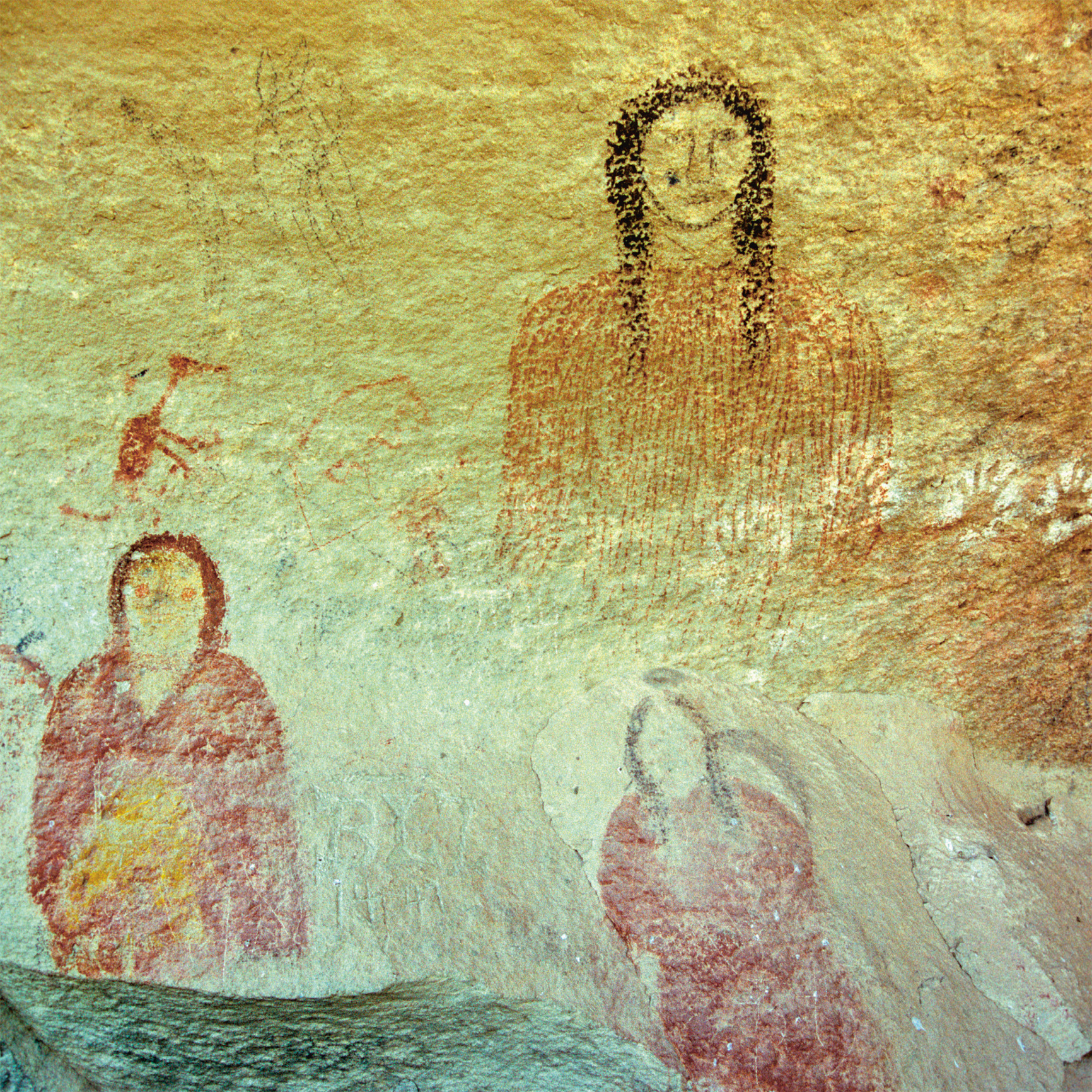
t Pictographs within the park
A tidy Mormon town at the base of the Abajo Mountains, Blanding is home to the Edge of the Cedars State Park Museum. The park contains modest Ancestral Puebloan ruins, including a small kiva, or religious chamber. The museum has well-thought-out displays on the history of these ancient people and other cultures that have inhabited the region.
"
Edge of the Cedars State Park Museum
⌂ 660 W 400 N # 9am–2pm daily ¢ Jan 1, Thanks-giving, Dec 24, 25 & 31 ∑ stateparks.utah.gov
EXPERIENCE The Four Corners
|
Stay Cameron Trading Post This Native American trading post and motel features traditional Southwestern decor. ⌂ 466 Hwy 89, Cameron ∑ camerontradingpost.com \ The View Hotel The rooms at this Navajo-owned hotel on the edge of Monument Valley have balconies with great views. ⌂ Hwy 163 Monument Valley Tribal Park ∑ monumentvalleyview.com \ |
